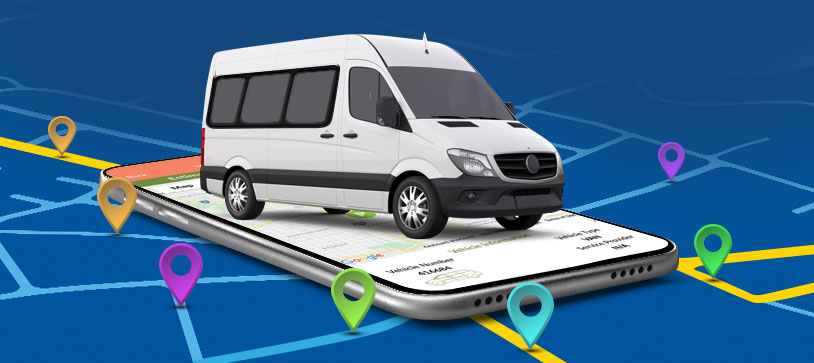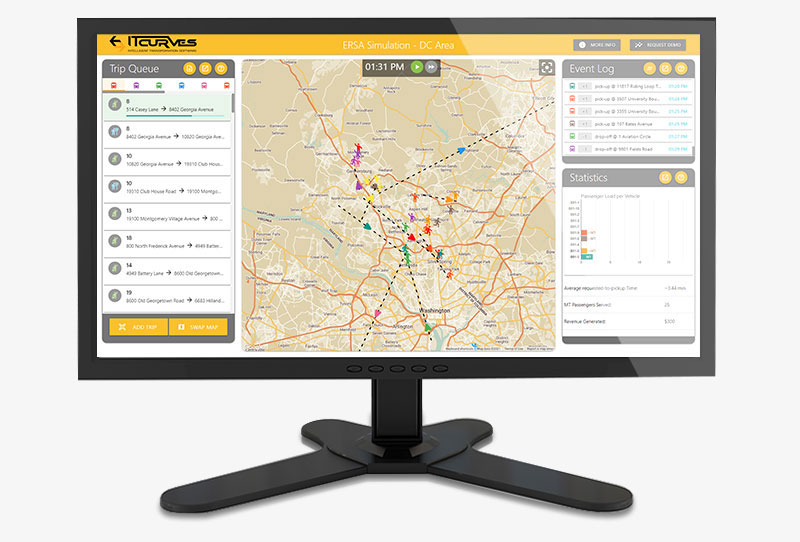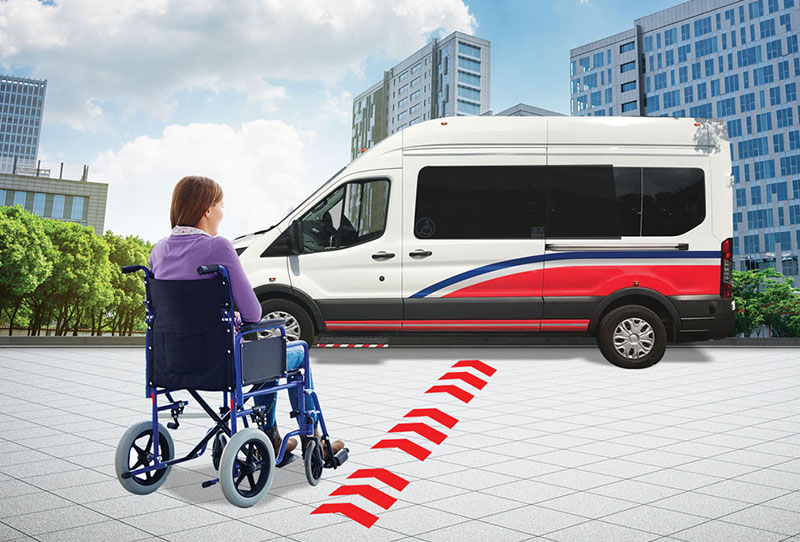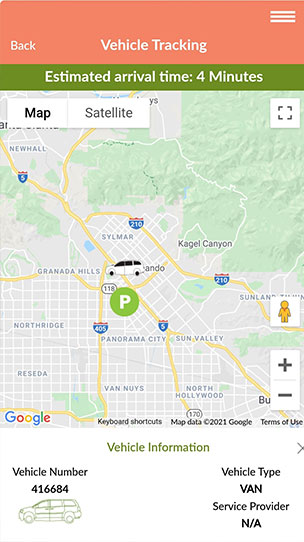
Oct 18 Commingling Effects of Microtransit
Dr. Bryce Kositz, IT Curves
bkositz@itcurves.net
Integrated Transit Modes for Urban and Rural Agencies
In most areas, urban and rural, public transportation services are offered in silos rather than as an integrated system, leading to a lack of efficiency. Commingling of transit modes offers higher efficiency and allows for the addition of microtransit – technology-enabled demand-response transportation – which is an important and perhaps necessary feature in today’s transit. IT Curves has drawn on the past decade of expertise to develop a smarter approach to employing commingled microtransit as a glue to integrate and improve all other modes of transportation in the public transit system.
IT Curves breaks down the walls between existing siloed transit services, improving efficiency by connecting the dots between riders and their public transit. By using friendly rider interactivity tools and powerful shared ride dispatch infrastructure system, public transit can achieve a highly productive Mobility-as-a-Service that integrates all modes of service. A complete transit agency software system needs to include easy to use rider interactivity tools, a dynamic routing suite, a comprehensive rider eligibility system, a flexible fare calculation and payment system, and a vehicle communication software with a fraud proof service usage control through reliable automated rider recognition

The goal of this report is to accumulate the lessons of public pilots and research papers to show how IT Curves’ specialized software easily allows for commingled fleets and riders to better leverage the strengths of microtransit and expand service across transit networks. First, we consider the lessons for urban transportation systems and how commingled paratransit and microtransit can enhance and expand both the fixed route and paratransit usage. Second, we look at how the unique services provided by rural systems should be integrated into a network 2 of paratransit, fixed route, and microtransit. Finally, we look at lessons in equity and access for both urban and rural systems.
Supporting Urban Fixed Routes
The IT Curves system commingles paratransit and microtransit so that, not only are paratransit riders encouraged to transfer to fixed routes, but paratransit vehicles’ excess capacity can also serve additional on-demand riders. High-capacity fixed routes including large buses and subways are, and in many routes will remain, the foundation of a public transportation system. Commingled paratransit and microtransit, however, enhances and increases the overall usage of transit and expands equity in on-demand mobility.
Microtransit will complement high-performing fixed routes and profoundly improve public transit routes in low density or geographically challenging areas. In suburban or low-density areas, microtransit’s smaller vehicles are able to operate more efficiently than large busses. [1] Moreover, the flexibility of on-demand services expands the zone of service and ensures that empty busses do not go up and down fixed routes. In these areas, on-demand microtransit services can bring in new ridership. For example, a microtransit pilot in in Seattle showed that many riders served by microtransit came from areas outside of walking distance to the nearest fixed-route stations. [2]
Paratransit vehicles operating in such areas can offer this microtransit service using their excess capacity. Using excess capacity is beneficial for paratransit in two ways. First, commingled services increase the load of paratransit vehicles and thus increases the efficiency of the vehicle. Second, since the vehicles will visit transportation hubs for the microtransit vehicles anyway, transit agencies may choose to offer paratransit riders incentives such as lower or free fare to transfer to fixed-route transit for all or part of their trips. This discourages long trips on the expensive paratransit network, resulting in more passenger per hour with shorter rides, and creating excess fleet capacity for on demand services to cover additional areas.
IT Curves utilizes the lessons of prior pilots and implements our integrated transportation software to improve service and increase transit efficiency through
innovative uses of technology. Some of the key points are: first, these flexible commingled paratransit vehicles should make regular stops at the hub point where they transfer
riders to or from other public transit. A report on the Alameda-Contra Costa Transit District noted that, “Based on on-going analyses of the pilot, AC Transit found that almost twice as many passengers board Flex at BART stations, rather than scheduling Flex to go to BART stations.” [3]

During a pilot in LA, the city opened up three microtransit linked to fixed-route stations where users could book rides to or from the station to other locations in each zone, and, “that platform successfully delivered rides to users who summoned it.” [4] The pilot in Seattle, based on a similar model, showed increased ridership at stations served by microtransit. [5] By having microtransit vehicles appear regularly at the hub station, it can greatly increase the productivity of that vehicle while also providing access to those without smartphones or apps. Second, similar stops should be scheduled for other ride generators in the service zone. In a study conducted by the National Academy of
Sciences, they found that in microtransit areas with major ride generators, “Agencies reported [microtransit] carrying as many as 9 passengers per hour on average throughout the day, with higher numbers during peak hours.” [6] By structuring schedules around a few key points, it can build a ridership and entice new riders into the transportation network. Microtransit helps urban areas to integrate other services, using excess capacity in paratransit to expand the reach of the network.
Integrating Rural Services
Public transit agencies in rural areas face distinct problems from their urban counterparts and are positioned to benefit most from applying the integrated fleets commingling their services and employing powerful technology offered by IT Curves. Rural agencies run multiple, overlapping services for specific populations or purposes, including paratransit, shopping circulars, shuttles for elderly riders, on-demand services, and limited fixed routes. They also work in sparsely populated areas, often in difficult terrain. The difficulty and expense of providing so many separate services constrains the size, capabilities, and responsiveness of each of these services.
There are several fundamental system concepts that the underlying technology must support to be able to offer commingled fixed, paratransit, and on-demand microtransit services: dynamic routing capabilities, flexible stops, and rider interactivity tools. The IT Curves approach has technologies for each that allows the commingling of the various services and rider bases to build a fully integrated, on-demand, mixed service fleet.
First, dynamic routing means the route maker and dispatch system needs to be capable of dynamically, in real-time, changing vehicle routes and manifests. Dynamic routing adjusts the vehicle route by looking ahead at each stop and only route the vehicle to those stop where there is a registered demand. Dynamic routing preserves stops at ride generators and major transit hubs even if there is no registered demand, because it assumes there will be walk-on riders at these stops.
Second, the system is preconfigured for a number of flexible stops, where the vehicles are routed to those stops only when there is registered demand. These stops can be placed in convenient locations riders can walk to, as is the case for Wilson, NC, which replaced their entire public transit system with microtransit. [7] This not only eliminates vehicle detours to stops where there is no demand, it ensures that stops are in locations which reduce vehicle miles travelled. Different rider bases, however, can be served by different rules; for example, paratransit riders can receive door-to-door service while other riders are asked to walk to a flexible stop nearby.
Third, these flexibilities offered by dynamic routing, flexible station, and same day on-demand service require powerful rider interactivity tools. These interactivity tools allow users to be connected to system, give and receive information, book rides, negotiate pickup and drop off 7 https://ridewithvia.com/resources/multimedia/the-city-that-brought-microtransit-to-rural-america/, and https://www.ncdot.gov/news/press-releases/Pages/2020/2020-12-04-wilson-microtransit-project.aspx. Dr. Bryce Kositz, IT Curves 5 times, track their rides, and more. In short, a dynamic system of routing and stops requires dynamic information exchange with riders.
The three tools all work together to increase productivity because it reduces the number of stops, breaks down the walls between siloed services, and allows rural agencies to serve more people more equitably. As argued in a National Academies of Sciences report, the major limiting factor in microtransit efficiency is the number of stops. [8]
Using dynamic routing and flexible stops, vehicles skip areas of no demand, and as a result make less stops. Commingling fleets and services makes all these currently partitioned services more productive by allowing for better usage of shared available resources. Successes in using this model include Jersey City NJ, where they have deployed their own vehicles in an integrated fleet. [9] Rural agencies can ill afford to have empty vehicles and overlapping services leading to excess costs. Integrated
fleets which primarily serve one purpose, while flexibly serving other demand where their capacity and location allows, creates efficiencies throughout the entire system. Integrated fleets through IT Curves similarly promotes equity and access by ensuring that riders are provided the service they need; rider interactivity tools allow riders to set their mobility needs and request the service appropriate to them. Routing ensures that a vehicle that can serve those needs is dispatched, and these needs are communicated to the driver. Thus on-demand microtransit services become the glue which brings together all other services
Equity and Control of Services
Public Transit is committed to difficult and grandiose equity of services. This means they are committed to providing equal cost, quantity, and quality of service to
all citizens with different physical, mental, and financial capabilities in the transit coverage area. Controlling fleets and services is vital to achieving the goal of equity.

Some transit agencies have tried to contract microtransit services out to Transportation Network Companies (TNCs) which poses many problems. First, TNC’s services
are predominantly designed for as one-size-fits all for a certain demographic of highly mobile, digitally literate, and credit card enabled people. Second, driver training to serve people with physical and mental challenges and provision of specialized equipment remains and will be a barrier for TNCs. Uber has lost multiple law suits for drivers discriminating against blind passengers, with some horror stories of blind passengers being dropped off along the highway and told they are at their destination. [10]
Such failures can harm the reputation and mission of the contracting agency. Not only is contracting out contrary with the mission of transit agencies, but because TNCs bill per ride, the success of microtransit pilots linearly increases cost of the third-party services. However, efficient route building exercise shows that taxi or TNCs can be very effective in limited uses such as serving overflow rides or outlier trips. Such transportation options can surge available vehicles more easily and help transit agencies ensure that no trip goes unserved in periods of unexpectedly high demand.
Most importantly, a third-party service cannot bind together and improve the other modes of service. To successfully commingle services, transit organizations need to be able to monitor transportation data. A National Academies of Sciences report suggests that, “Pilot projects have often provided transit agencies with greater procurement flexibility… As with all procured services, transit staff realize they must provide thorough oversight…. When the contractor owns and controls the data, this ownership and control do not allow for thorough monitoring of service.” [11] By controlling their fleet and data, microtransit can commingle with other services, adapt as needed, and develop into a key component of transportation planning.
Ingredients for Commingled Microtransit
This paper provides practical considerations in how transit agencies can integrate microtransit in transit networks, fleets, and services. The article also introduces IT Curves’ innovations in the development of cloud software and rider interactivity tools which allow for commingled fleets and services. To reach such levels of integration and service, transit agencies need several key technologies, including:
1) Rider interactivity tools are required to register demand, allowing agencies to use flexible stops, dynamic route building, and provide on demand services. IT Curves’ Where’s My Ride system provides riders with methods to register demand, track their ride, receive status, automate onboarding, pay for service, and monitor their receipts. Such tools are an essential ingredient, and first step to set up a dynamic and integrated system
2) A dynamic and efficient route making algorithm can commingle paratransit, fixed transit, and microtransit into an integrated network of riders and services. The system must consider rider needs, vehicle capabilities, and other attributes while automatically dispatching rides. IT Curves’ Efficient Ride Sharing Algorithm is an example of a flexible route builder that can be deployed to serve commingled fixed, paratransit, and microtransit routes.

2) A dynamic and efficient route making algorithm can commingle paratransit, fixed transit, and 3) An integrated system of eligibility, from start of enrollment application, approval of eligibility, a system of rider identification, a fraud proof rider recognition, and ability to set and monitor rides constraints is essential. The system must be able to distinguish between types of customers based on their needs and subscriptions and calculate fare based on their eligibility. An example of such system is IT Curves’ turnkey Eligibility as a Service which offers all these features in one system.
4) Experience shows another key requirement is a flexible and dynamic fare calculation system which not only calculates riders’ fares based on their eligibility, but also capable of flexibly splitting their fares into subsidized and copayment amounts.

5) Vehicle communication is instrumental not only for navigation, but also to provide integrated electronic tools for onboarding and offboarding passengers. On-demand
service is impossible with inadequate real-time communication technologies. Data-enabled driver tools that can accept new rides in a live environment and navigate the vehicle along its dynamic routes. Whether with drivers or autonomous vehicles, a package to automatically onboard and offboard riders is also key to maintaining efficiency. IT Curves’ facial and QRC recognition tools support automatic onboarding and offboarding as well as and automatic fare charging.
IT Curves has built upon the lessons of the pilots referenced and its field experience to implement a customizable, integrated system for commingled services. Using these five tools – easy-to-use rider interactivity tools, dynamic route building, a comprehensive eligibility system, flexible fare calculation including billing capabilities, and interactive in-vehicle communication devices – microtransit can break down the walls between siloed services and increase the efficiency, reach, and equity of public transit
Refrences
[1] TransitCenter. “The Limits of Microtransit.” TransitTools #13, January 2020: https://transitcenter.org/wpcontent/uploads/2020/01/Microtransit-1-1.pdf.
[2] Hallenbeck, Mark, et. al. Mobility on Demand in the Puget Sound Region: Evaluation of the Use and Performance of the MOD Pilot. Washington DC: Eno Center for Transportation, 2021. 72-3.
[3] Westervelt, Marla, et. al. UpRouted: Exploring Microtransit in the United States. Washington DC: Eno Center for Transportation, 2018. 14.
[4] Brown, Anne, Michael Manville, and Alexandra Weber. Mobility on Demand in the Los Angeles Region: Evaluation of the Use and Performance of the MOD Pilot. Washington DC: Eno Center for Transportation, 2021.
[5] Hallenbeck. Mobility on Demand in the Puget Sound Region. 72.
[6] National Academies of Sciences, Engineering, and Medicine. Microtransit or General Public Demand Response Transit Services: State of the Practice. Washington DC: The National Academies Press, 2019. 37
[7] https://ridewithvia.com/resources/multimedia/the-city-that-brought-microtransit-to-rural-america/, and https://www.ncdot.gov/news/press-releases/Pages/2020/2020-12-04-wilson-microtransit-project.aspx.
[8] National Academies of Sciences. Microtransit: State of the Practice. 2-3
[9] https://newyork.cbslocal.com/2019/09/19/jersey-city-ride-sharing-buses-via-stephen-fulop/, and https://www.insidernj.com/press-release/mayor-fulop-hails-via-jersey-city-success-story-low-income-diversecommunities-benefiting-innovative-reliable-rideshare/
[10] BBC, “Uber ordered to pay 1.1m to blind woman refused rides,” https://www.bbc.com/news/technology56583428. 2 April 2020.
[11] National Academies of Sciences. Microtransit: State of the Practice. 3-4.

